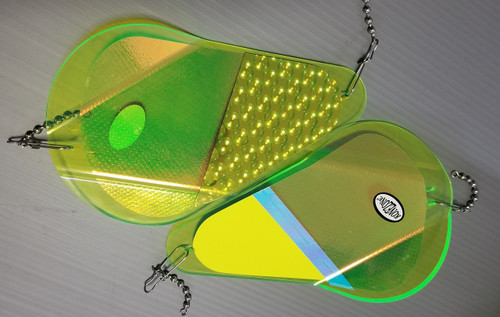I ran a hotspot agitator on one side and a standard hotspot 11" dummy on the other side for about a month straight in the Haida Gwaii this past summer. The 11" hotspot outfished the triangle agitator 2:1 or 3:1. I tried doubling up the triangles, and a couple other guys tried daisy chains, but the 11" hotspot was still the way to go. I ran mine on a short leash too, between 2-3' from clip to flasher. Seemed to rotate just fine and made for way less hassle and tangles. A few years ago one of our guides was having good success with one of those multi-blade dummy flashers that look like something youd hang over a babys crib - he called it a dredge. Our lodge has a policy of not using inline flashers for guests, so I had plenty of time to experiment.



